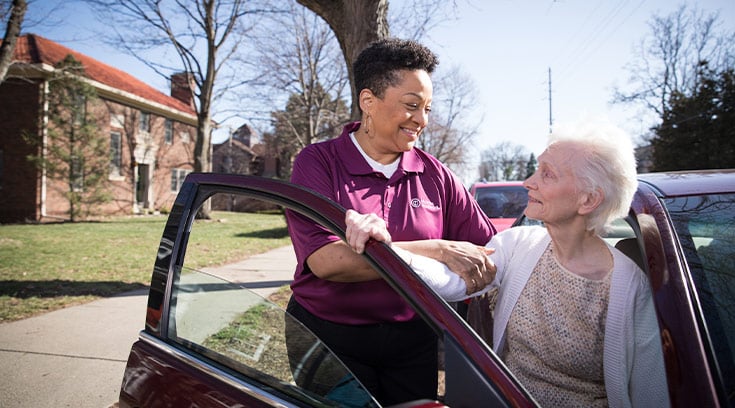The internet has become an essential tool in the lives of older adults—making it easier to stay informed, complete tasks and connect with loved ones during the pandemic. But, with more spent time virtually—from paying bills to video calls—there is also a higher chance that the older adult in your life will encounter an online scam.
Two-thirds of older adults (67%) have been the target or victim of at least one common online scam or hack, according to a survey by Home Instead, Inc. These scams often appear out-of-the-blue, in various forms, asking unsuspecting recipients to share sensitive or financial information in order to resolve a payment or aid a loved one. This year in particular, Social Security-related scams are back on the rise—defending their title as the top-reported scam to the Federal Trade Commission (FTC) in 2019.
Anyone could fall victim to an online scam. It’s just another reason why older adults should be more mindful of their actions online and take proactive steps to better protect themselves.
By adopting a few preventive measures for cybersecurity, family caregivers and older adults can protect their identities and sensitive financial information from being exposed.
Preventive Measures to Protect Older Adults from Online Scams
- Share with care. It’s easy to get caught up in social media and lose sight of the personal details we are making public. While sites like Facebook and Instagram can be a convenient way to stay connected with family and friends, it’s crucial to proceed with caution and avoid sharing non-critical information (like your location). Consider adjusting an older adult’s privacy settings to limit who has access to the profile content.
- Think before you act. Communication that creates a sense of urgency—such as an email asking for money—is likely a scam. Scammers can get access to personal information by prompting you to click links in the emails they send. If something appears out of the ordinary, it’s best to just delete it or reach out directly to the company or person to determine if the email is legitimate.
- Beef up security. Half of older adults do not use a password on at least one of their devices, leaving it open to whomever may pick it up. Locking all devices—computers, tablets and cell phones—with a strong, secure password can add a second line of defense. Consider mixing in letters, numbers and symbols, and leaving out easy-to-guess information, such as name or birthdate.
- Use security software. Installing antivirus software from a reliable source can add an extra layer of protection to online devices. Be wary of security updates from pop-up ads or emails, as these may be malware (malicious software) that could infect your device. It’s important to remember no software is infallible. Give older adults an added layer of defense by reminding them to log out of apps and websites when they are done using them.
- Contact an expert. It’s natural to feel unsettled after being the target of an online scam. However, seniors must realize that it’s nothing to be ashamed of. It’s critical these incidents are reported to the proper authorities in order to provide proper support and to alert others who may be impacted in the future. If you do find yourself or your loved one affected by a scam, reach out to a trusted source—such as family member or a tech-savvy friend—for guidance.
When it comes to cybersecurity, education is the best form of protection. Devote time to learning how to spot a scam and keep yourself and the senior in your life from becoming a target of fraud.
Compassionate Home Care





